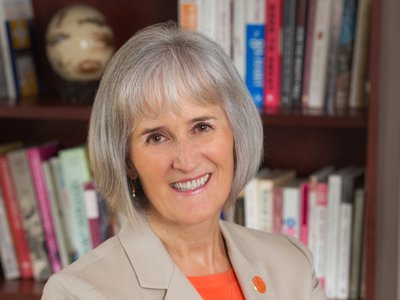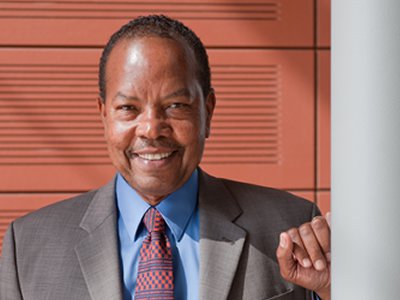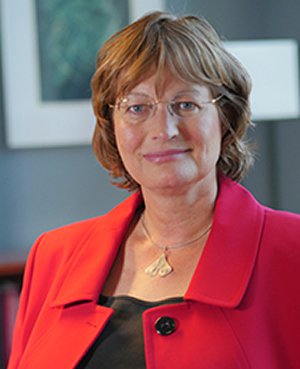Syracuse Awarded $1 Million Grant to Support Diversity, Inclusion in STEM
University will use HHMI Inclusive Excellence grant to transform undergraduate science education

Syracuse University is a 2018 recipient of the Howard Hughes Medical Institute (HHMI) Inclusive Excellence grant, supporting diversity and inclusion in science education.
The five-year, $1 million grant will fund the University’s Collaborative High-Impact Activities in Natural Science Education (CHANcE) Project, which seeks to build an inclusive culture in the science, technology, engineering and mathematics (STEM) fields nationwide.
Vice Chancellor and Provost Michele G. Wheatly says the CHANcE Project will empower STEM faculty to become champions of Inclusive Education [IE], a new initiative promoting the inclusion, persistence and development of all science students.
“Thanks to the HHMI’s vision and generosity, our faculty will participate in an array of activities that develops cultural awareness and imparts the knowledge they need to transform pedagogy into high-impact practices,” says Wheatly, also a biology professor in the College of Arts and Sciences (A&S).
Syracuse is one of 33 colleges and universities nationwide to receive the HHMI Inclusive Excellence grant. The 2018 cohort joins 24 other institutions that won it last year.
Beginning next month, each of the 57 institutions will work with HHMI and its partner, the Association of American Colleges and Universities (AAC&U), to effect cultural change.

One of IE’s biggest proponents is CHANcE Program Director George M. Langford. He is confident HHMI’s support will re-envision undergraduate science learning at Syracuse.
“Our approach is three-fold,” says the dean emeritus of A&S, who is a Distinguished Professor of Neuroscience and professor of biology. “CHANcE will engage large cohorts of students in authentic research, such as collecting data and getting articles published. The project also will provide professional development opportunities for biology and chemistry faculty wanting to implement active-learning strategies and will establish approaches and practices broadening the participation of undergraduates of all backgrounds.”
Langford cites recent IE successes at the universities of Colorado-Boulder and British Columbia, saying it is time to move away from the traditional lecture format. “Providing course-based research experiences, instead of cookie-cutter experiments, builds our capacity to engage all science students during their undergraduate years, especially those coming to Syracuse via nontraditional pathways,” he continues.
Although CHANcE affects all STEM learners at Syracuse, ones who particularly stand to benefit are nontraditional students, underrepresented minorities and women.

It is for this reason, says A&S Dean Karin Ruhlandt, that the project will initially target STEM faculty teaching first- and second-year introductory biology and chemistry courses. “They will be encouraged to attend workshops that mitigate racial and gender biases, social value orientations and dominant cultural norms. The University also will provide assistance in the form of postdoctoral teaching fellows and graduate assistants to help them redesign their courses,” says Ruhlandt, also a Distinguished Professor of Chemistry.
Already, there is a groundswell of IE interest among the University’s junior faculty and Ph.D. students. “They want to be good teachers, so getting them to embrace new ideas, such as active-learning pedagogy and course-based authentic research experiences, is not difficult,” Langford notes.
During two rounds of selections in 2017-18, HHMI received applications from nearly 600 colleges and universities. HHMI then invited 140 institutions, including Syracuse, to submit full proposals for plans to develop inclusive environments for their students.
In an attempt to achieve what Langford describes as “real change,” each grantee will use an assessment tool called Progress Toward Inclusive Excellence Through Reflection (PIER). Co-developed by HHMI and AAC&U, the PIER tool is a set of nine questions that guides the institution in considering the impact of its efforts and where it needs to change.
Each grantee also will join a community of four to five other IE institutions known as a Peer Implementation Cluster (PIC), designed to spur idea sharing. Syracuse’s PIC will address a range of issues, including anti-bias and anti-racism training.
“This initiative is about encouraging colleges and universities to change the way they do business—to become institutions with a significantly greater capacity for inclusion of all students, especially those from nontraditional backgrounds,” says HHMI President Erin O’Shea.
Syracuse prides itself on opportunity and access, with minority students representing nearly 25 percent of the total student population. Still, the risk of certain groups of students being more likely to persist in STEM than others is a major concern.
“Race and ethnicity, socioeconomic status, parents’ level of education—they are some of the factors tied to undergraduate success,” says Langford, a newly elected Society Fellow of the American Society for Cell Biology, where he has served as inaugural chair of the Minorities Affairs Committee. “Instead of adapting minority students to the majority culture, we need to see their diverse backgrounds as academic assets and then discover ways to nurture their potential.”
In addition to Wheatly, Ruhlandt and Langford, the CHANcE leadership team includes John Tillotson, associate professor and chair of science teaching; Marie Garland, executive director of the Center for Faculty Leadership and Professional Development; Jason Wiles, associate professor of biology; Ramesh Raina, professor and chair of biology; and Tim Korter, professor and chair of chemistry.
HHMI is a science philanthropy whose mission is to advance basic biomedical research and science education for the benefit of humanity.
Featured
Michele Wheatly Professor of Biology, Former Provost
Karin Ruhlandt Distinguished Professor Emerita
George Langford Professor Emeritus of Biology
